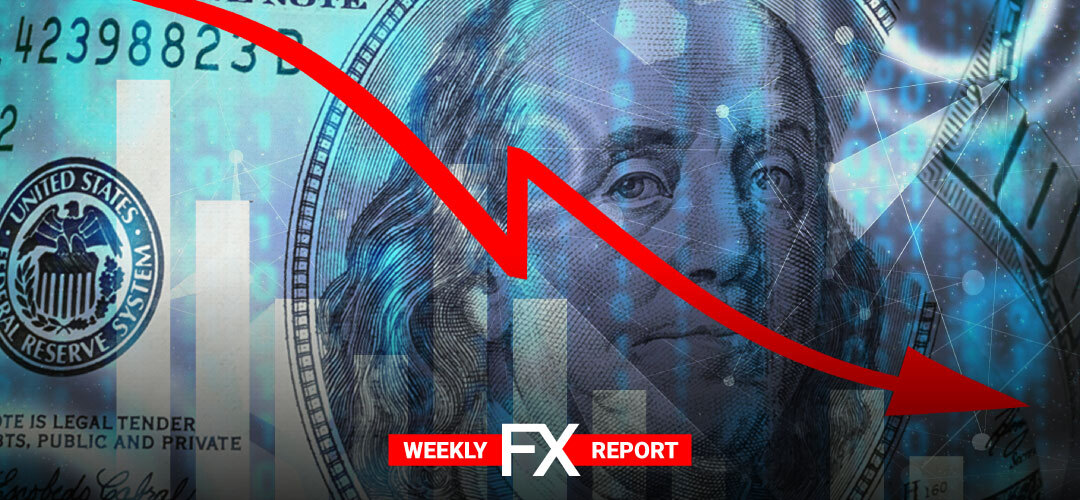The dollar registered a fourth straight monthly drop setting for the worst August in five years and the longest run of monthly losses since the summer of 2017.
U.S. Federal Reserve’s accommodative stance last week has weighed on the greenback. Investors interpreted it as a sign of lower interest rates for longer.
In his speech, last Thursday Federal Reserve Chair Powell outlined an accommodative shift in the central bank’s approach to inflation. Powell committed to keeping inflation at 2% on average.
Investors cheered the quickening growth in China’s services sector. The recovery prospects in the region added to the positive mood around the historic shift in the U.S. central bank’s stance. According to the data, activity in China’s services sector expanded at a much faster pace in August. Demand across the economy continues to recover from a coronavirus-induced slump.
Massive monetary and fiscal stimulus has bolstered markets in recent months, overpowering concern about the outlook for the global economy. Investors bet on more accommodative measures by major central banks, in line with the Fed’s stance last week.
Investors grew cautious on the announcement of the Prime Minister Shinzo Abe resignation on Friday. Sweeping to power in late 2012, Abe deployed his three arrows of Abenomics: large-scale monetary easing, fiscal spending and structural reforms.
There are concerns about future fiscal and monetary stimulus policies. News that Chief Cabinet Secretary, Abe’s close ally, would join the race to succeed his boss comforted traders. Yoshihide Suga will probably stay the course on the ‘Abenomics’ economic and extend the revival programme.
Japan’s factory output rose in July at the fastest pace on record signalling a gradual recovery from the coronavirus-led blow.
On the trade war front, top U.S. and Chinese officials renewed their commitment and reaffirmed their Phase 1 trade deal.
LQDFXperts – Worst August in five years for the greenback
EUR/USD gained close to 1.0% last week, as the euro closed above the 1.19 line. The US dollar firmed against its peers but was set for its fourth straight month of losses, being down 1.2% for the month. The euro has climbed 0.9% last week, is poised to post the fourth month of gains. The US Congress remains deadlocked over a massive fiscal stimulus package. At the same time, the eurozone economy continues to struggle in the wake of Covid-19.
GBP/USD showed considerable volatility throughout the week but ended the week unchanged. The pound jumped on the bandwagon this week as the US dollar showed broad losses. With both the UK and the US struggling with Covid-19, investors do not appear to be attracted to either currency.
Dollar/yen ended the week with slight losses after the yen recovered with strong gains on Friday boosted by Abe’s resignation. It could be a quiet week for the pair.
AUD/USD climbed to a 21-month high last week, as the pair gained 1.4 per cent. The Australian dollar touched a 21-month peak of $0.7381 and remains set to post a fifth straight monthly rise. This would be Aussie’s best streak in over a decade and a 34% gain from March’s trough.
The Canadian dollar enjoyed another winning week, as USD/CAD broke below the 1.31 mark for the first time since January. With the US dollar under pressure from the major currencies, the loonie could make further gains next week.
The week ahead – Eurozone inflation and NFP awaited
Attention now turns to a host of Federal Reserve officials due to speak this week. Investors expect that policymakers will provide more clues on the bank’s new policy framework. Investors will closely watch Inflation readings for the EU bloc on Tuesday and U.S. payrolls on Friday.
- On Monday (31.08) all eyes are on German Inflation. German CPI will probably come in at 0.0%, pointing to weak economic activity. The previous release came in at -0.5%.
- On the radar is an Australian central bank meeting on Tuesday (01.09) where analysts expect no policy changes. They say an upbeat tone in the Reserve Bank of Australia Rate Decision could boost the Aussie.
- On Friday (04.09) investors are waiting for the US Employment Report. Nonfarm payrolls slowed to 1.76 million in July, down from 4.80 million beforehand. The slowdown will probably continue in August, with a forecast of 1.51 million. Wage growth, which showed a weak gain of 0.2% in July, is expected to fall to a flat 0.0% in August. The unemployment rate fell to 10.2% in July, down from 11.1 a month earlier. The rate may dip to 9.8% in August.
Follow this week’s economic calendar.
PLEASE NOTE The information above is not investment advice.
Sources: Reuters, CNBC, BBC, The Guardian
